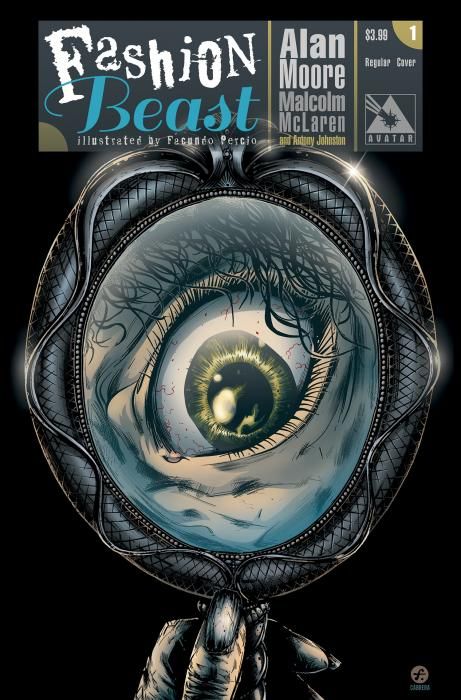Avatar has made little secret of its plans to adapt as much Alan Moore work as possible into comics and "Fashion Beast" #1 is the latest addition to their canon. Writer Anthony Johnston and artist Facundo Percio are tasked with bringing this series to comics using an unproduced screenplay as a base. Not just any screenplay, though -- one written in the 1980s as a collaboration between Alan Moore and Malcolm McLaren, who was better known as the manager of seminal British punk band, the Sex Pistols.
The task seems thankless, but as it turns out, this comic is quite close to being a fairly typical Alan Moore experience. Which is to say, it's actually very good. Whether Johnston and Percio have compensated for the translation between screen and page, or whether the rich visuals were part of Moore's own directions isn't clear, but this is an inventive, tightly-written and enjoyable comic.
The story is allegedly a retelling of Beauty and the Beast, but the setting is strange and the characters are defined with typical Moore-esque sharpness such that they're not easily transposed onto the original story. Although the title and combination of creators suggests a satirical take on the fashion world, the truth seems to be far more critical exploration of fashion as filtered through speculative fiction. Whatever you think the setting will be, it's unlikely to resemble anything you find in the comic itself.
As for why you'd bother making this at all when the screenplay has been floating around for so long, there's no doubt that a comic adaptation puts the story in front of people who would otherwise never have given it a second look. In many ways, comics are a good medium for adapting movies because of the similarities in visual presentation. It's also true, however, that Moore writes with the medium in mind. There's every chance that adapting an Alan Moore screenplay to comics could prove about as worthwhile an experience as adapting an Alan Moore comic into a screenplay.
There are elements that betray this story's origins as a screenplay, not least the inclusion of sequences clearly designed for moving cameras and specific rhythms. Frank Quitely can do that sort of thing in comics, but Percio -- while good -- is no Frank Quitely. Still, Johnston has managed to retain Moore's dialogue and Percio's visuals are enjoyable in their own right, so there's a lot that can be praised from a technical sense.
It's fair to say, however, that this first issue slice doesn't quite give us enough to get sucked into the story just yet. Again, this would appear to be a pacing issue caused by the adaptation -- but then if you're buying this reasonably niche product, you're probably ready to forgive its shortcomings anyway. Indeed, it's worth remembering that "it ended too soon" is far from the worst failure to be accused of.

